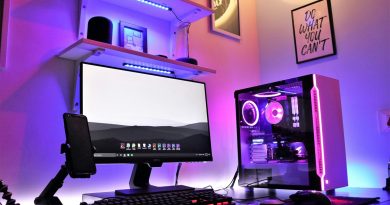Laptop Buying Guide 2025: Key Specs You Can’t Ignore
Buying a new laptop in 2025 can feel like navigating a minefield of buzzwords—“AI-optimized,” “OLED,” “M2X Pro,” “DDR5X,” and so on. But when it comes down to day-to-day use, only a handful of specifications truly impact your experience: performance, battery life, display quality, portability, and connectivity. Ignore the rest, and you’ll end up overspending on features you don’t use—or underpowered for the work you actually do.
This guide breaks down the five key specs you need to evaluate—and how they translate into laptops that fit different budgets and use cases in 2025.
⚡ 1. Processor & AI Acceleration
Why it matters: Modern productivity apps and AI assistants (text generation, image upscaling, on-device transcription) lean heavily on specialized silicon. You want a chip with both strong CPU cores and dedicated AI/Neural engines.
- Look for: Apple M3 Pro/Max, Intel Core Ultra, AMD Ryzen 8000 with XDNA.
- What it means: Faster compile times, smoother multitasking, and real-time AI features without streaming to the cloud.
Mason’s Tip: If you use AI features—automatic photo tagging, predictive typing, real-time translation—prioritize “Neural” benchmarks over raw clock speeds.
🔋 2. Battery Capacity & Fast Charging
Why it matters: You don’t want a 4-hour workday tethered to an outlet. In 2025, 70 Wh+ battery packs combined with 65 W+ fast-charge support are the norm.
- Look for: Laptops that advertise “0→50% in 30 min” charging.
- What it means: A full morning of work offline and a quick midday top-up at a café.
Mason’s Tip: Verify real-world battery tests—spec sheets lie. Aim for at least 8 hours in mixed-use testing.
🖥 3. Display Panel & Color Accuracy
Why it matters: Whether you’re crunching spreadsheets or color-grading photos, you need enough resolution and brightness.
- Look for: 14–16″ OLED or mini-LED panels, 1000 nits peak brightness, 100% DCI-P3 coverage.
- What it means: Crisp text, vibrant media, and outdoor-viewable screens.
Mason’s Tip: If you work outdoors or in bright rooms, don’t settle for <500 nits – anything less will wash out under daylight.
🧳 4. Portability & Build Quality
Why it matters: A sub-1.3 kg aluminum or carbon-fiber chassis with a 16 mm profile makes daily carry painless.
- Look for: “Ultralight” or “Thin & Light” labels, MIL-STD or 360° hinge for convertibles.
- What it means: All-day comfort in backpacks or messenger bags; ruggedness for travel.
Mason’s Tip: Weigh the trade-off: more ports vs. slimmer body. If you need HDMI, USB-A, Ethernet, choose a slightly thicker model—or be ready to carry a dongle.
🌐 5. Connectivity & Expansion
Why it matters: Wi-Fi 7, Bluetooth 5.4, Thunderbolt 4/USB4—these determine your docking station experiences and wireless speeds.
- Look for: At least two Thunderbolt 4 ports, Wi-Fi 7 compatibility, optional 5G modem.
- What it means: Seamless multi-display setups, 10 Gbps file transfers, and on-the-go LTE/5G hotspots without a phone tether.
Mason’s Tip: If you run virtual machines or external GPUs, Thunderbolt ports are non-negotiable.
🧠 Mason’s Final Word
In 2025, the sweet spot for most professionals and students is a 14–16″ OLED laptop with an M3 Pro (or equivalent), 70 Wh+ battery, and Thunderbolt 4. If you’re a creative, stretch to mini-LED and 100% DCI-P3; if you’re ultra-mobile, opt for sub-1.2 kg builds. Above all, prioritize real-world tests—benchmarks only tell half the story.



